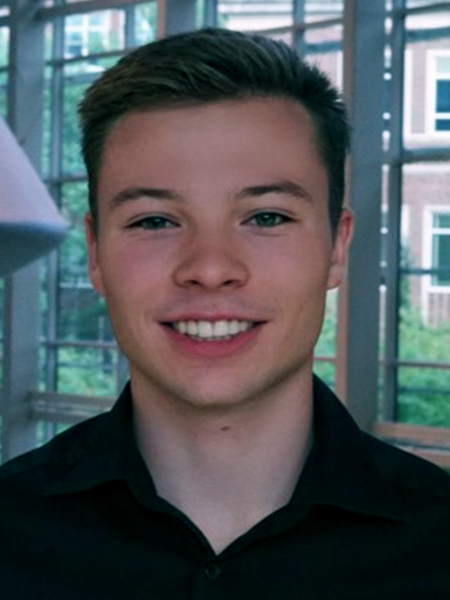Three students selected for NSF Graduate Research Fellowship Program
Three students who will attend graduate school in the School of Aeronautics and Astronautics were selected for the prestigious NSF Graduate Research Fellowship Program.
Ruth Ansley Beaver, Ryan Strelau and Paige Whittington received the oldest graduate fellowship of its kind. Established in 1952, the NSF GRFP recognizes and supports outstanding graduate students in NSF-supported science, technology, engineering and mathematics disciplines who are pursuing research-based master’s and doctoral degrees at accredited U.S. institutions, according to its website.

The fellowship provides a three-year annual stipend of $34,000, a $12,000 cost of education allowance for tuition and fees and opportunities for international research and professional development.
Beaver will start at Purdue in the fall, after completing her bachelor’s at the College of William and Mary. There, she majored in physics with a concentration in engineering physics and applied design. At Purdue, under advisor Timothee Pourpoint, Beaver intends to research novel fuels, possibly hypergolic propellants and possibly a new configuration for solid fuels.
“I am very honored to receive this fellowship. It will allow me the flexibility to pursue my interests in research without the stress of worrying where my funding is coming from,” Beaver said.

Strelau, currently is a senior in AAE, will start his master’s in Carson Slabaugh’s research group in the fall. Strelau’s research will be in propulsion, focusing on studying laser ignition in a rocket combustor designed for vacuum applications using a variety of advanced optical diagnostic methods.
“This work will allow a better understanding of future in-space chemical rocket engines that utilize this ignition technology,” Strelau said. “The data collected from this experiment will be used to validate computational models that simulate the reacting flows. I will also help support other projects, such as rotating detonation engine, that our group is working on.”
While working as an undergraduate research assistant at Zucrow Labs the last two years, Strelau said he has received incredible guidance from AAE assistant professor Slabaugh and research engineers Rohan Gejji and Aaron Lemcherfi.

“Their influence solidified my passion for research and I cannot thank them enough for the large amount of their own time spent helping me become a strong candidate for NSF,” Strelau said. “My letter of recommendation writers and feedback given to me from graduate students in our group also ensured that my application was competitive. I am deeply honored that my application was chosen out of many to be awarded, and it wouldn’t have been possible without all those that helped me along the way. The fellowship will allow me to have a lot of freedom with my research throughout my graduate career and ensure that I am working on projects that I am truly passionate about.”
Whittington, currently a first-year master’s student in AAE, will be performing research in astrodynamics by analyzing orbits and how to transfer between them in the Earth-Moon system. A student in Kathleen Howell’s research group, Whittington’s research mainly will deal with the three-body problem in which an additional gravitational body is present. That presents additional difficulty because, unlike the two-body problem, there are no analytical solutions to the three-body problem. Through her research, Whittington will seek to reduce the uncertainty of orbit selection near the moon where orbital perturbations can be significant.
“I feel very honored to have been selected to receive an NSF Graduate Research Fellowship, and I want to thank my advisor Dr. Howell, the Multi-Body Dynamics Research Group, my letters of recommendation writers and my friends and family,” Whittington said. “They have helped me grow both academically and personally, and I am grateful for all the guidance they have given me. This fellowship will allow me to pursue my passion for astrodynamics and contribute to the future of space exploration. I am excited to use this opportunity to learn more about our beautiful universe and share my knowledge with those around me.”
